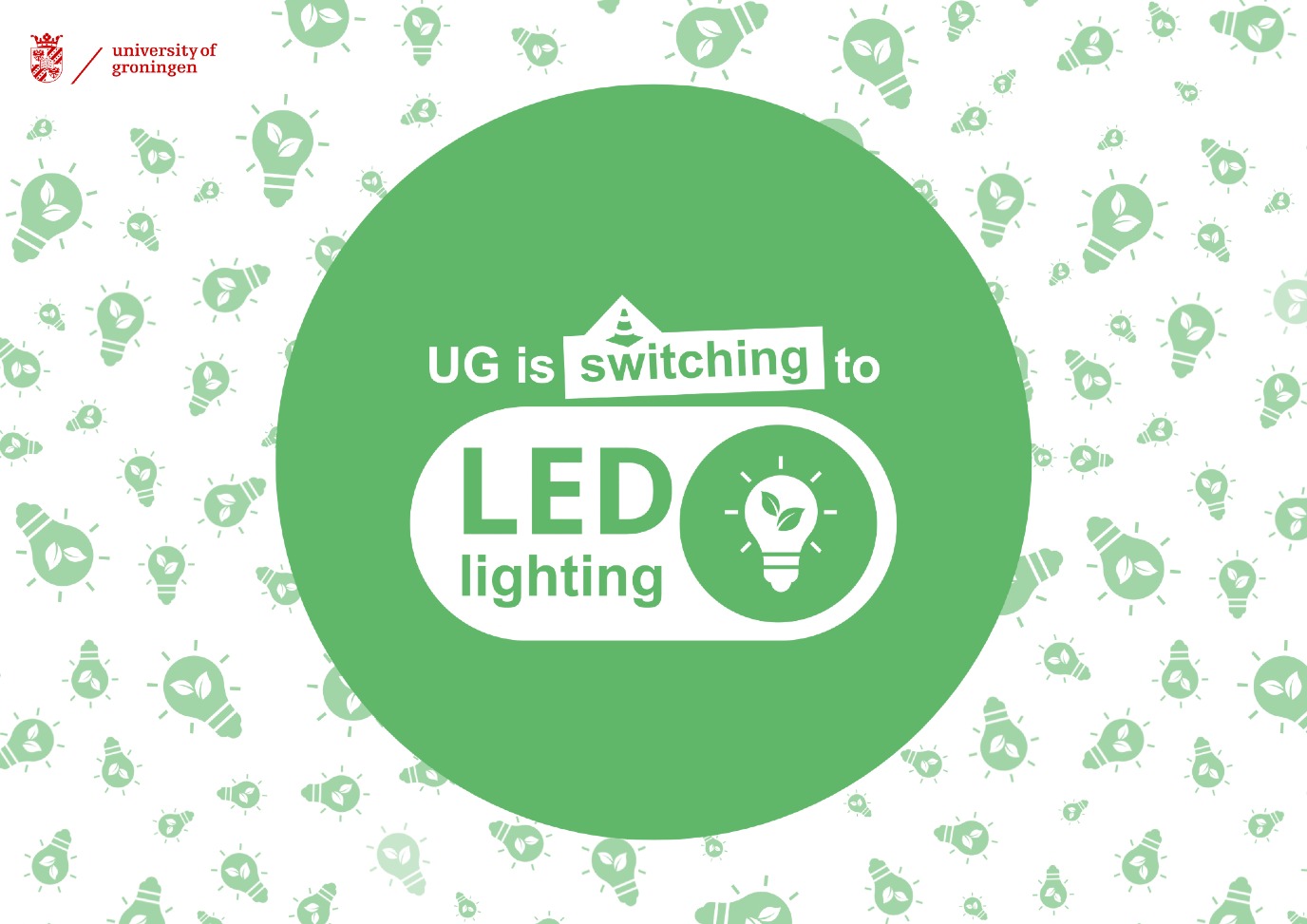LED IT GLOW: smart lighting for a sustainable university
The university is taking an important step towards a more sustainable campus. From December, we will replace all non-energy-efficient interior lighting in the buildings with smart LED lighting. This will not only save a lot of energy, but also contribute to the sustainability goals. Read here what this project means for the university.
What is smart lighting?
Smart lighting works with sensors that determine when and how brightly the lights are on. For example, a lamp automatically turns on as soon as someone enters a room and switches off when the room is empty. It also adapts to ambient light: bright at dusk or dark, and softer when there is plenty of daylight. This means not only ease of use, but also significant energy and cost savings. Also, you won’t forget to turn off the lights again.
What will be replaced?
Only non-sustainable main lighting will be replaced. In buildings such as the Röling Building, the Feringa Building and the Anda Kerkhoven Centre, lighting is already up to standard and won’t be replaced.
Future applications
The sensors being installed will provide opportunities for other smart applications in the future. Think of controlling ventilation or collecting data for more efficient building management. The Smart Buildings project has been launched for this purpose.
Energy saving and CO2 reduction
Savings depend on the current lighting, but energy consumption on lighting is expected to be reduced by 50-80%. This means not only lower costs, but also a big reduction in CO₂ emissions.
In addition, old lighting is collected and processed into raw materials. These are then made into new products.
Within the LED project, we are replacing about 40.000 light fittings UG-wide. Conventional lighting will be replaced for smart LED lighting, meaning that light will be dimmed or switched off whenever possible, controlled by presence detection.
This brings the following estimated savings potential after all 40.000 luminaires are replaced:
-
Reduction of around 3,850,000 kWh per year (~6.9% of the UG's total energy consumption!)
-
Reduction of about 2 million kilograms of CO2 per year!
This CO2 reduction is roughly equivalent to the following:
-
Saves melting so many m3 of polar ice per year: 1.242 m3
-
Single flight for one person from Amsterdam - New York: 2.270
-
CO2 absorption of this many mature trees: 82.791
Planning
The replacement operation will start on 2 December 2024. First, buildings where the maintenance benefits are greatest will be tackled, such as the complex of the Faculty of Medical Sciences and the KVI. Buildings with recently installed LED lighting, planned renovations or that are being sold are not included.
Within five years, interior lighting will be replaced university-wide. This will be done in consultation with building managers. When it is a building's turn, this will be communicated through the internal communication channels of the faculty or department concerned.
The work will be carried out by BAM Bouw en Techniek, keeping any inconvenience to a minimum.
Working together for a more sustainable future!

| Last modified: | 28 November 2024 1.57 p.m. |
More news
-
24 March 2025
UG 28th in World's Most International Universities 2025 rankings
The University of Groningen has been ranked 28th in the World's Most International Universities 2025 by Times Higher Education. With this, the UG leaves behind institutions such as MIT and Harvard. The 28th place marks an increase of five places: in...
-
05 March 2025
Women in Science
The UG celebrates International Women’s Day with a special photo series: Women in Science.
-
16 December 2024
Jouke de Vries: ‘The University will have to be flexible’
2024 was a festive year for the University of Groningen. In this podcast, Jouke de Vries, the chair of the Executive Board, looks back.

